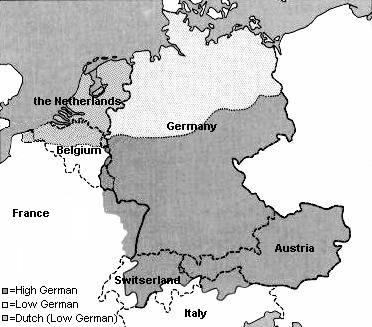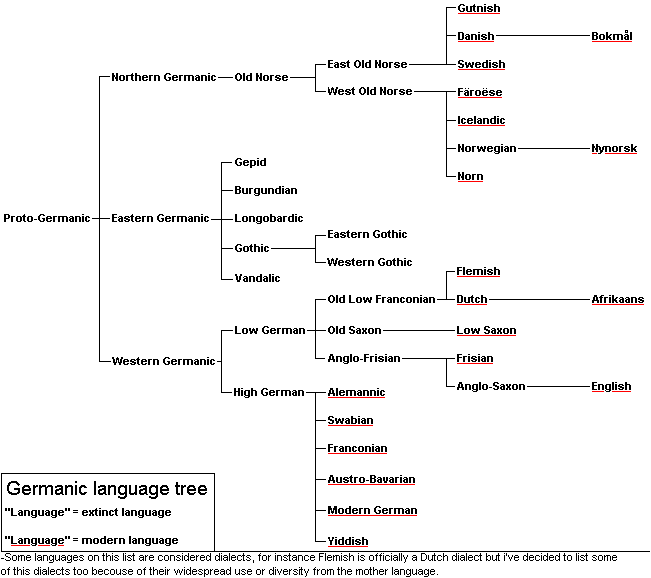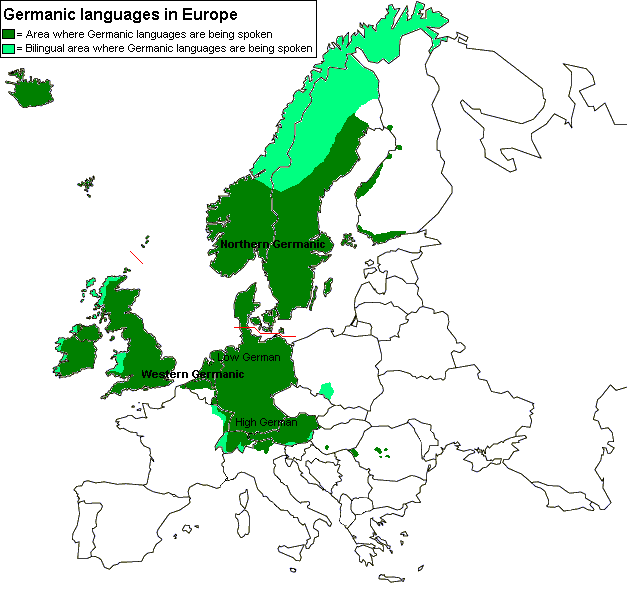

|
English: bear blood bow bring broad calf carp drive drink earth eel evil folk hand helmet keel king knight lamb little mast oar rudder run sea shield sick soul steer stork wife |
German: bär blut bogen bringen breit kalb karpfen treiben trinken erde aal übel volk hand helm kiel könig knecht lamm - mast - ruder rennen see schild siech seele steuer storch weib |
Dutch: beer bloed boog brengen breed kalf karper drijven drinken aarde aal euvel volk hand helm kiel koning knecht lam luttel mast - roer rennen zee schild ziek ziel stuur - wijf |
Swedish: björn blod bog bringa bred kalv karp driva dricka jord ål elak folk hand hjälm köl konung knekt lamm lilla mast åra ror ränna sjö sköld sjuk själ styra stork viv |
Proto-Germanic: beron bloþam bugiz brengan braidaz kalbaz karpaz dreiban drenkan erþo elaz ubilaz fulkam handuz helmaz keulaz kuningaz knehtaz lambaz lutilaz mastaz airo roþru rennan saiwaz skelduz seukaz saiwalo steuraz sturkaz weibam |
| ? | - | 2500BC | Native Northern European language |
| 2500BC | - | 2000BC | Mixture of native language and Indo-European influences |
| 2000BC | - | 500BC | Pre-Germanic (start of the first Germanic soundshift) |
| 500BC | - | 100BC | Proto-Germanic language (completion of the first Germanic sound shift) |
| 100BC | - | 400AD | Separation of Proto-Germanic into 3 main dialects and various subdialects |
| 400AD | - | 700AD | Dialects change into separate languages, second Germanic soundshift creates High German |
| 700AD | - | Present | Various old Germanic languages evolve into the modern Germanic languages |
|
|
|
|
|
|
|
|
|
|
|
|
|
|
|
|
|
|
|
|
|
|
|
|
|
|
|
|
|
|
|
|
|
|
|
|
|
|
|
|
|
|
|
|
|
|
|
|
|
|
|
|
|
|
|
|
|
|
|
|
|
|
|
|
|
|
|
|
|
|
|
|
|
|
|
|
|
|
|
|
|
|
|
|
|
|
|
|
|
|
|

| Change: | Dutch: | German: | (English:) |
| P - PF | appel | apfel | (apple) |
| T - (T)S | zetten | setzen | (to set/place) |
| K - CH (or CK) | maken | machen | (to make) |
| Change: | Dutch: | German: | (English:) |
| P - F (or FF) | open | offen | (open) |
| T - SS (ß) | water | wasser | (water) |
| K - CH | ik | ich | ( I ) |


